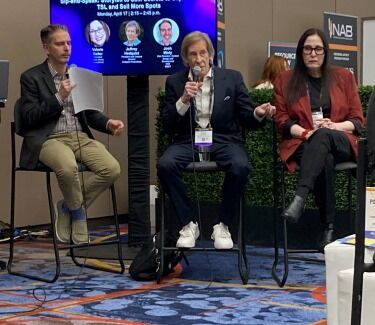Senators Propose Banning Teens From Social Media Without Parental Consent
- by Wendy Davis @wendyndavis, Yesterday
A new bipartisan Senate bill would require social media platforms to verify users' ages, prohibit teens under 18 from using social media without parental consent, and completely ban children under 13 from social media.
The Protecting Kids on Social Media Act, unveiled Wednesday by Senators Brian Schatz (D-Hawaii), Tom Cotton (R-Arkansas), Chris Murphy (D-Connecticut), and Katie Britt (R-Alabama) also would prohibit social media platforms from using algorithms -- defined as fully or partially automated systems -- to recommend material to teens.
The measure defines social media platforms as companies that allow users to create accounts to post or distribute media, with exemptions for a broad range of companies -- including online news sites, gaming platforms, and online retail marketplaces.
The bill comes as an increasing number of states are attempting to regulate teens' use of social media.
This year, Utah and Arkansas passed bills that ban minors under 18 from using most large social media platforms without parental consent. The bill in Arkansas also explicitly requires social media platforms to verify users' ages.
A California law that was passed last year directs online companies to prioritize teens' best interests and well-being, and restricts online companies from collecting a wide range of data from teens.
The California law is currently facing a challenge by the tech industry organization NetChoice, and the Utah and Arkansas bills are expected to be challenged in court.
NetChoice on Wednesday criticized the proposed federal bill.
“If enacted, this would require massive, widespread data collection and retention, undermining Americans’ privacy and security,” NetChoice general counsel Carl Szabo stated.
Advocacy groups Common Sense Media, Fairplay, and The Center for Digital Democracy also expressed concerns about the bill.
Those organizations, which advocate for children, said they support a ban on algorithmic recommendations to teens, but oppose other provisions, including ones banning teens from social media without parental consent.
“By requiring parental consent before a teen can use a social media platform, vulnerable minors, including LGBTQ+ kids and kids who live in unsupportive households, may be cut off from access to needed resources and community,” the three groups said in a joint statement.
They added that the age verification provisions “introduce troubling implications for the privacy of all users.”
The Supreme Court has previously said that teens have First Amendment rights, including the right to access information. In one notable ruling, the Supreme Court voted 7-2 in 2011 to strike down a California law that banned the sale of violent video games to minors, without parental consent.
Justice Antonin Scalia, who authored the opinion in that case, wrote that the government doesn't have a “free-floating power to restrict the ideas to which children may be exposed.
He added that basic free speech principles “do not vary when a new and different medium for communication appears.”
Courts have also ruled in the past that age verification laws online unconstitutionally infringe on people's right to access information anonymously.









